Like pretty much everywhere else, golf in Canada boomed following World War One, with numerous architects designing some of the nation’s greatest golf courses in that period. Unfortunately, the effects of modernism following World War Two took a toll on many of the classic courses in the country. Most of those courses are either categorized as NLE—no longer existing—or spiritually do not exist in the same capacity as they once did. Granted, there are architects like Jeff Mingay and Ian Andrew who have restored golf courses like St. George’s, Victoria, and Kawartha. Aside from a small, select group of courses that have been tediously cared for, most of the Golden Age golf courses have been heavily edited. Luckily for us, the push for a PGA TOUR event or major did not seep over the 49th parallel and plague our golf courses like they did at most major US clubs. Realistically, the renovations needed to bring golf back to what it is what are a much smaller scale than Canada. There are courses that need an Oakland Hills or Inverness Club overhaul, but luckily, not all. One of those that needs a bit of TLC, but remains largely recognizable, is Jasper Park Lodge, arguably Canada’s finest golf course even today. In 2022, Beyond The Contour ranked it 3rd in the country and the 2nd best publicly-accessibly golf course in the country.
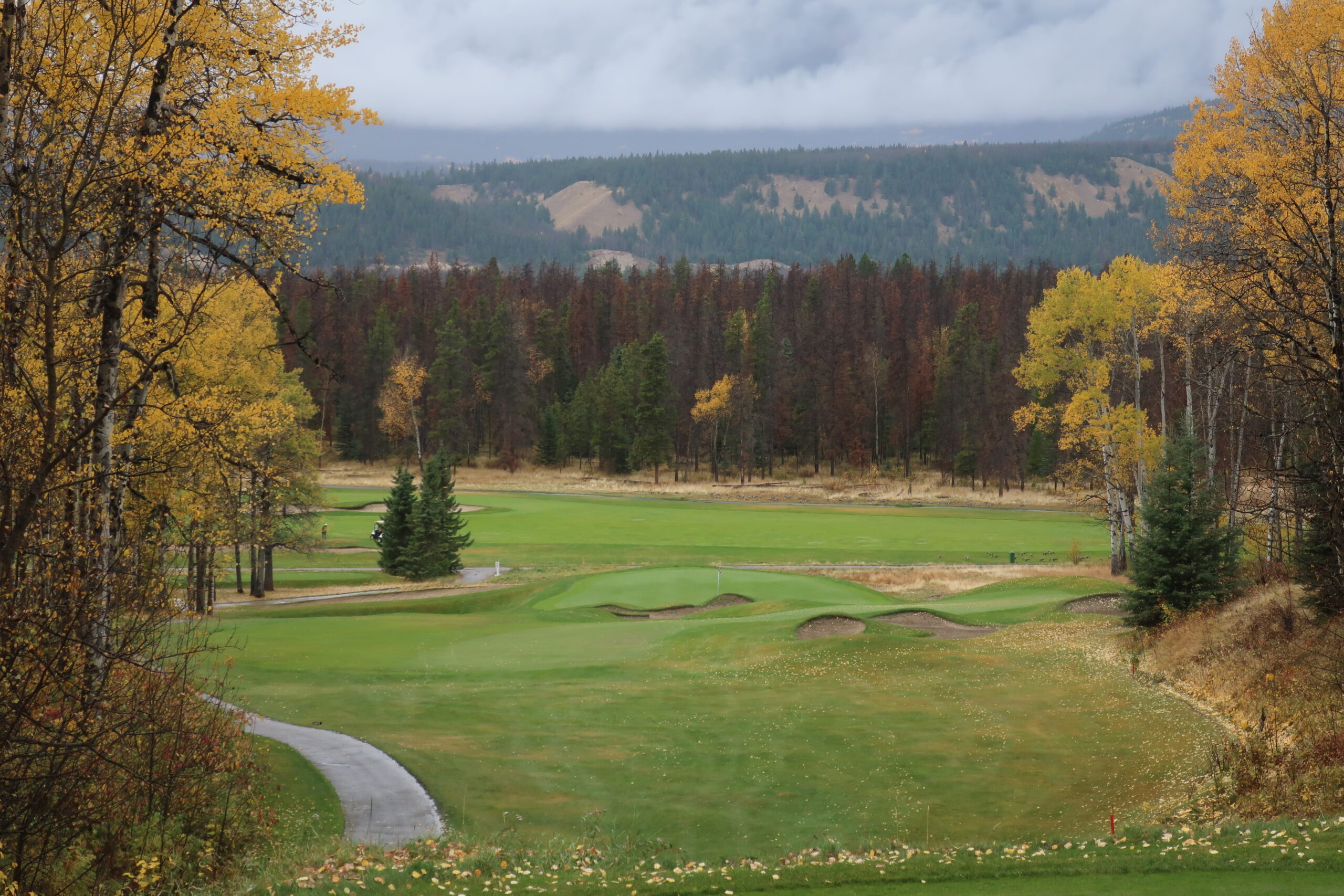
The golf course opened in 1925, commissioned by the Canadian National Railway (CNR, now CN) to compete with CP Rail’s Banff Springs in the south. However, it opened with rather vanilla bunker style to what we associate Thompson with. Prior to the 1929 Canadian Amateur and following the 1926 renovation plan, the golf course evolved into the version we play today. No longer were the bunkers large ovals void of character. During the renovation, the bunkers were replaced by dramatic, fingered bunkers mirroring the Rocky Mountain peaks. Comparatively, very little has changed since that late 1920s renovation from Thompson himself. There are no re-routed holes; no moved greens or completely altered holes. Bill Robinson did move a bunker or two and renovated at least three greens: the 4th, 13th, and 14th. There is about 200 yards of added length from the 6400 yard golf course that opened, although Thompson did draw his initial plan at 6600 yards. Other than that, Mother Nature and Father Time have been the ones responsible for changes. We essentially play the same golf course, or about as close to it as it gets in Canada.
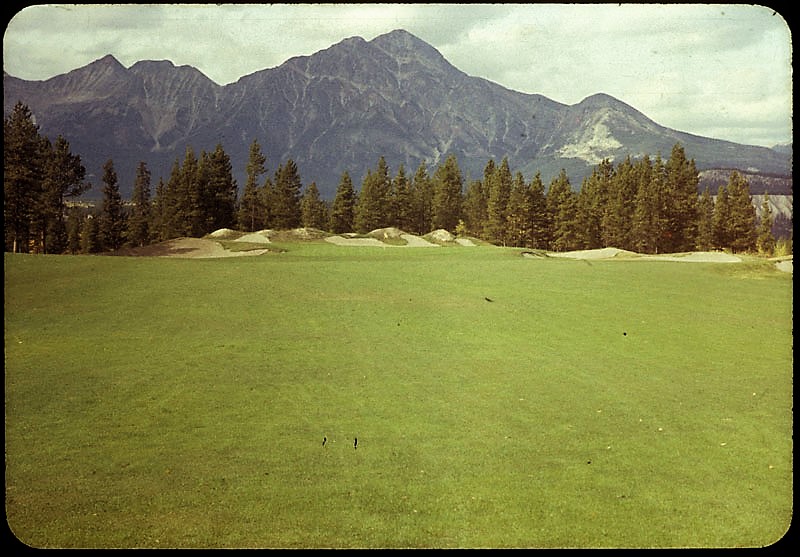
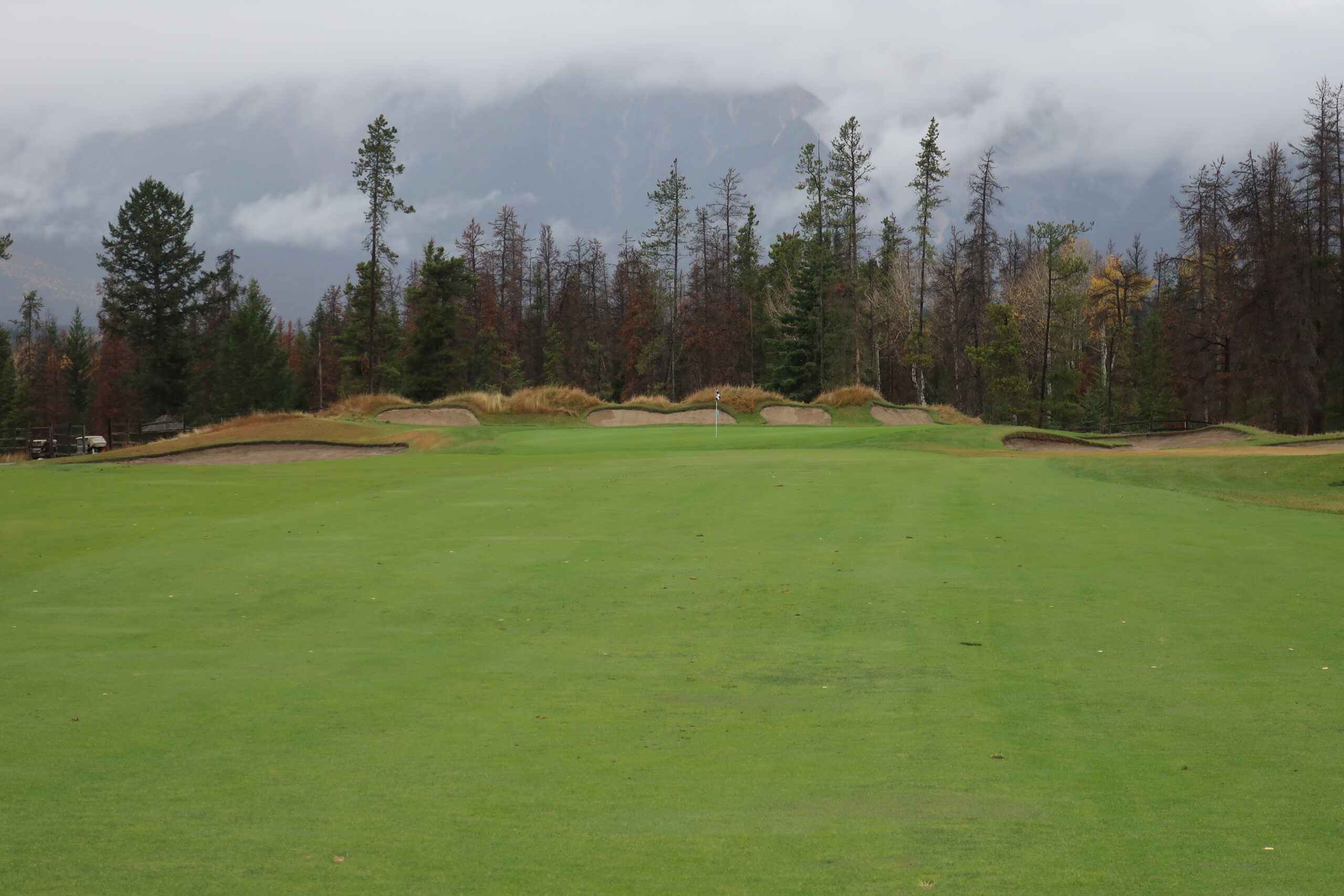
Given its largely preserved nature, why would a restoration make sense? If it is that close to the original, should it not it be left alone and messed with, especially when renovations have, historically, done more harm than good?
During the last 20 years I have inspected all the reputed best golf courses in Britain, Ireland, the Continent of Europe, North America, and Australia, but not one has granted such a favourable and vivid impression on my mind as Jasper. Dr. Alister Mackenzie, 1928
Simply put, the golf course has lost some of the edge that made it so celebrated early on. Dr. Alister Mackenzie, architect of Royal Melbourne, Augusta National, Cypress Point, and more, joyously wrote about the highlights of Jasper Park Lodge: “It is by far the best inland course in Canada or the United States. It is just as good a test of golf as Pine Valley, but at the same time shares with the Old Course at St. Andrews the unusual characteristics of being equally pleasurable fot he long handicap.” Continuing, he celebrated that Jasper has been designed from a strategic point of view, and like seaside courses, “it is undulating without being hilly.” George Thomas, the architect of Riviera and this year’s US Open host Los Angeles Country Club, also fell in love with Jasper Park Lodge on his visit, making two of the greatest architects of all time among the high-profile fans of Thompson’s layout.
Point taken, you could say it is still highly celebrated. After all, this site’s panel put it only behind Cabot Cliffs and St. George’s in our Canadian Top 100; Golf Digest still has it inside the Top 100 World, which misleadingly ranks the best courses outside the United States. Nevertheless, it would rank in the Top 200 courses in the world if you included courses south of the border. Even so, Jasper has never ranked inside Golf Magazine‘s World Top 100, likewise for Golf Digest when they actually ranked the Top 100 in the World for the two lists.
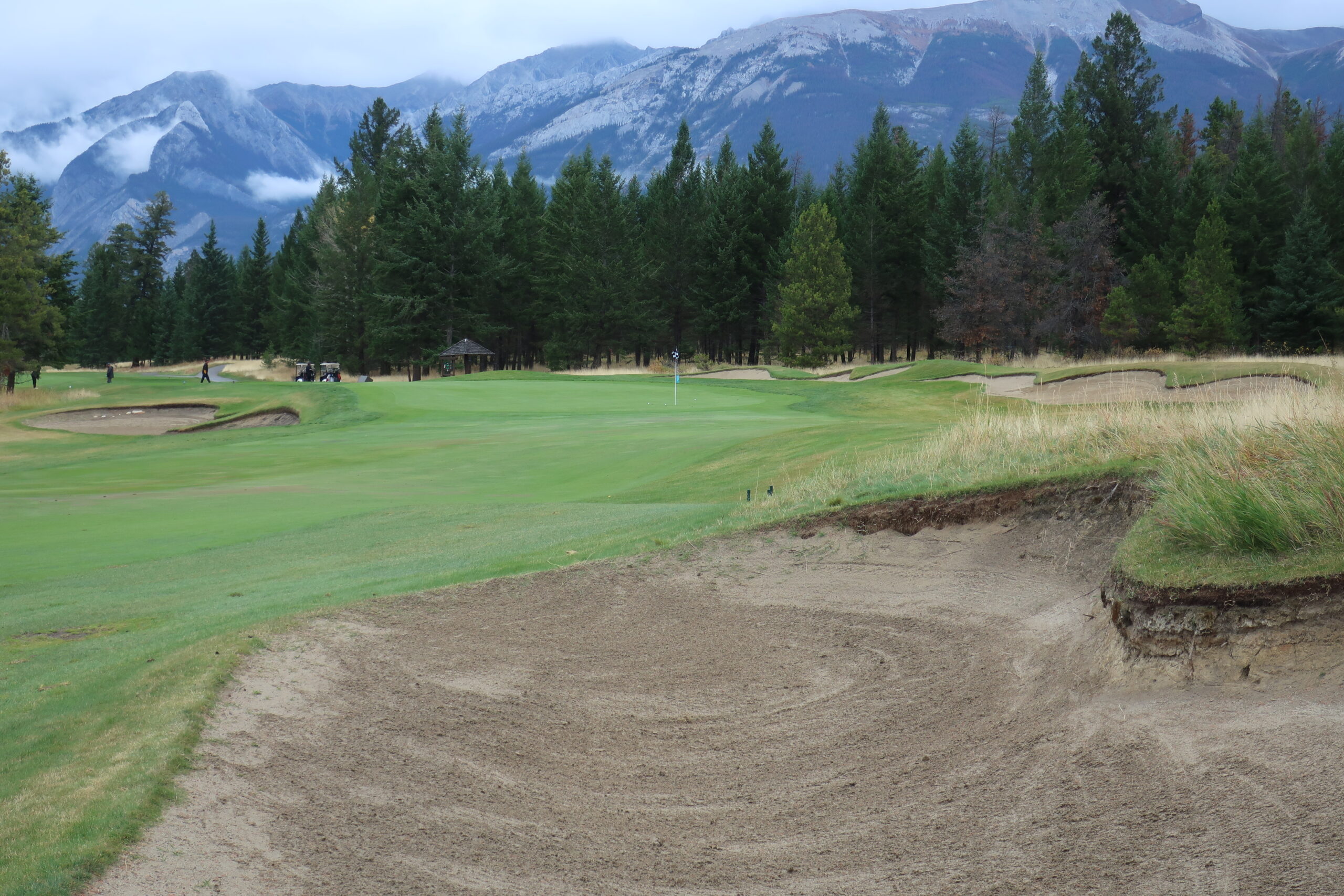
Golf Magazine Canadian World Top 100 Courses
- Capilano (1985-1991)
- Cabot Links (2013-)
- Cabot Cliffs (2017-)
- Cape Breton Highlands Links (1997-2011)
- Hamilton (2005 & 2007)
- Essex (1987 & 1989)
- Glen Abbey (1979, 1981, & 1985)
- National GC of Canada (1987-1997)
- St. George’s (1997-2021)
- Royal Montreal, Blue (1985-1995)
Golf Digest Canadian World Top 100 Courses
- Memphrémagog (2016)
- Cabot Links (2014-2016)
- National GC of Canada (2014-2016)
- St. George’s (2014-2016)
- Cabot Cliffs (2016)
- Hamilton (2014)
Without diving too much into some of the hurdles of these rankings (ie, which panellist from overseas is going to Jasper, Alberta?), it is not a stretch to put Jasper into the same tier as pretty much every golf course above, and better than most. Nevertheless, some minor changes could further prove that whilst also attracting some media attention, eyeballs, and intrigue to get people up to see it. Perhaps Mackenzie’s claim of the ‘best course in North America’ is a tad hyperbolic in today’s day and age filled with great golf, but nonetheless, that should put it into an elite level. Let’s get it back to that.

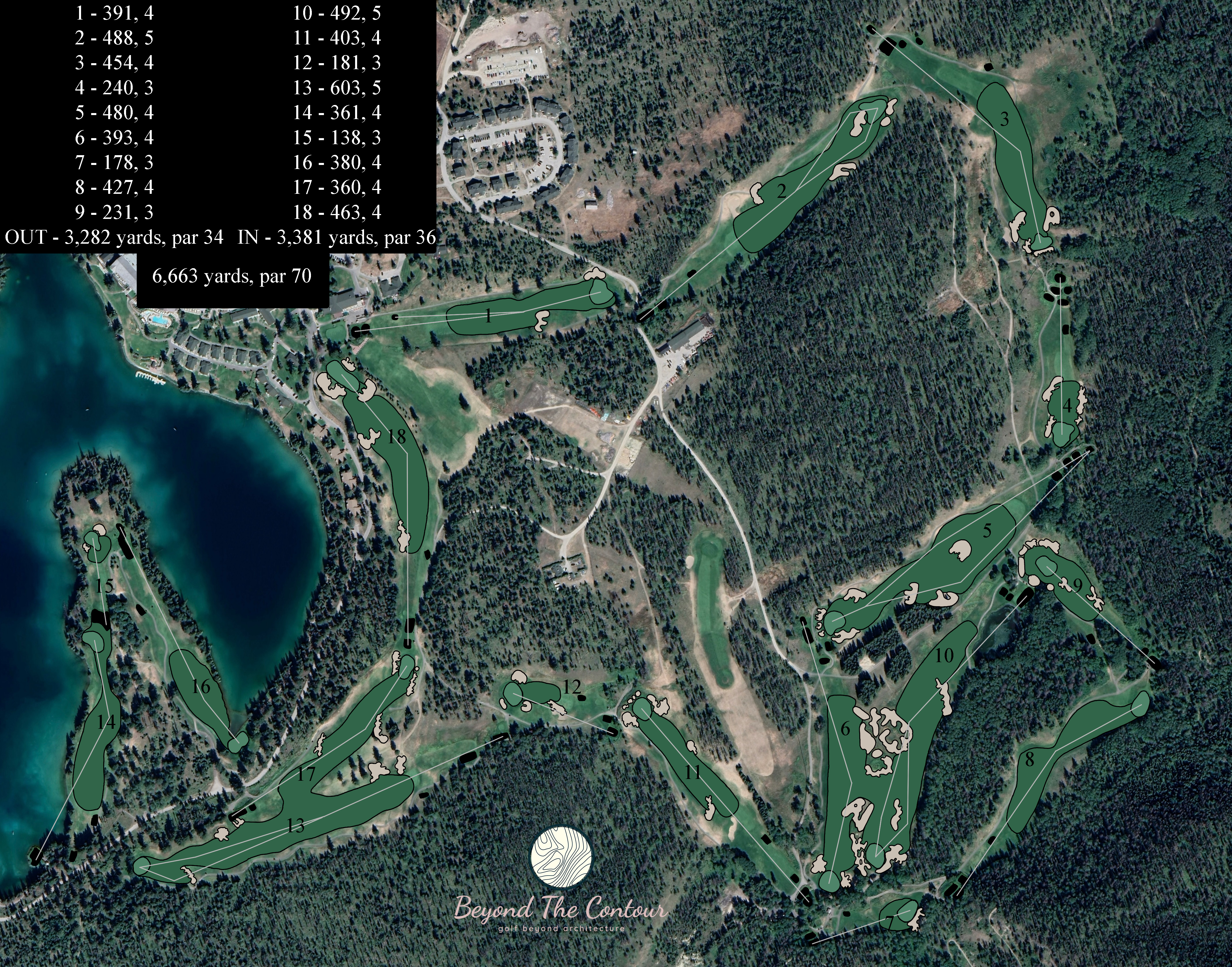
Without diving too much into tree clearing or adding tees (both of which provide unique hurdles in a National Park), the main issues addressed are green expansion, mowing lines, and some TLC for the bunkers. Let’s dive in.
Adjusting Bunkers For 2023
There is certain enjoyment to being able to play Jasper roughly as it was left in the 20s. However, once you reach the 11th and you fly the bunker by 70 yards from the elevated tee, you begin to realize how far technology has come. The bunkering scheme here is elaborate and rather beautiful to look at, but three holes have bunkers that are very clearly out of play today: left of the 2nd fairway, and the centre bunkers on 5 and 11. Additionally, bunkers near the green sites on the 3rd and 12th have been bought in to represent Thompson’s 1924 blueprint.
- 2nd hole, left fairway bunker: 241 yards to cover now, proposed 272 yards
- 5th hole, centre bunker: 245 yards to cover now, proposed 271 yards
- 11th hole, centre bunker: 192 yards to cover now, proposed 235 yards
In all three instances, the bunkers are meant to be carried, but not necessarily meant to be a difficult, heroic carry. On all three tee shots, they play downhill. Like Quaker Ridge’s restoration, the plan calls for adjusting the bunkers to not only represent what Thompson envisioned, but play as he thought they might in the modern era. On the 2nd, a player going up the left will have a flatter lie coming home and subsequently a more downhill 2nd shot. On the 5th, a dramatic downhill tee shot over the bunker will open up a second shot in (also note, restoring the 5th back to a par 4 as it was). The 11th’s carry was always shorter, meant more for aesthetics and aiming than anything else.
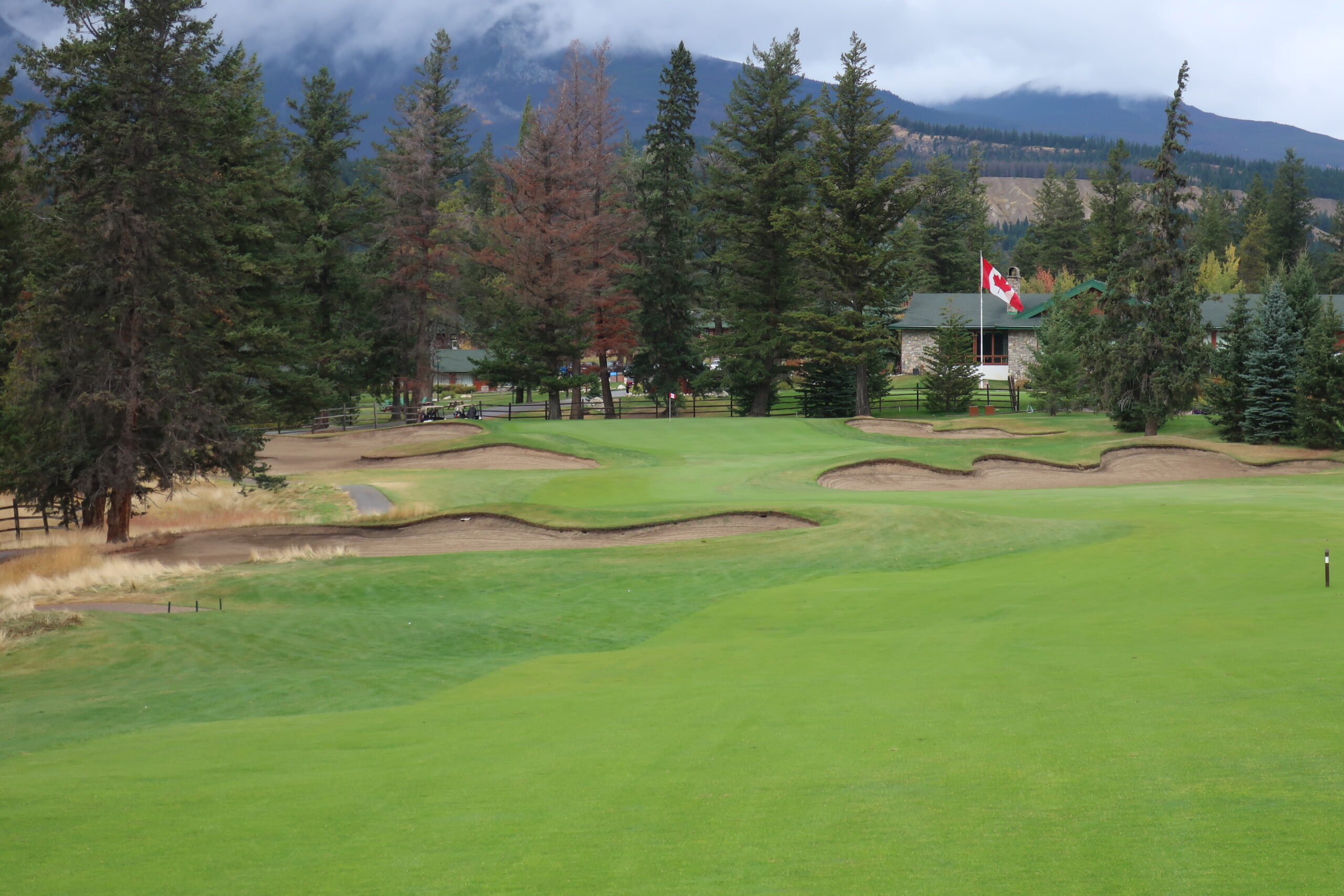

Included in the proposed work is a bunker refresh to liven them up and recuperate the original drama. At the current JPL, the bunkers are much more tame than a Kawartha, St. George’s, or even Banff, but originally, they would have stacked up against his most aggressive. Thankfully, some of the most dramatic shapes remain, and can easily be touched up with some love. As evident above, the bunkering doesn’t fundamentally change, but changes pop and bring that dramatic Thompson bunkering back. Furthermore, bunkers have been taken out left of the 5th fairway, short of the 7th green, combined left of 4, combined in between 6 and 10’s greens and merged right of 17 to represent the original golf course. The only bunker to stay that isn’t original? The Eden bunker behind 12, which I think needs to stay without a clear best route to wrap short grass around to mirror The Old Course at St. Andrews’ original Eden. The bunker behind 7 is an original Thompson version, and in this plan, is put back. Additionally, one bunker is added into the hillside on 17, which would camouflage together with the other fairway bunker and the greenside bunker and mirror the mountains in behind to add some character to a rather dull penultimate hole. However, this is my own addition and illustrating what I think Thompson would do in 2023, although that is how things have gone amok in years past with actual architects, so it could be removed for original integrity.
Green Expansion
As time goes on, greens shrink due to simple negligence. It happens at every golf course, and is a natural part of the lifecycle. Fixing it can not only spread out wear on the greens, enhance conditions, and improve strategic interest with reclaimed pin locations. At Jasper, numerous greens have shrunk away from the bunkering, including the 1st, 4th, 5th, 6th, 10th, and 17th. On the 2nd, Thompson specifically drew a green that wrapped around the bunker in the middle to produce an almost Lion’s Mouth feature, and with better mowing lines, the option to either use the slope on the right or left of the bunker depending on the pin is a wonderful thought. The 3rd’s long-lost back left pin tucked behind the hillside should absolutely come back, and in the plan, it does.
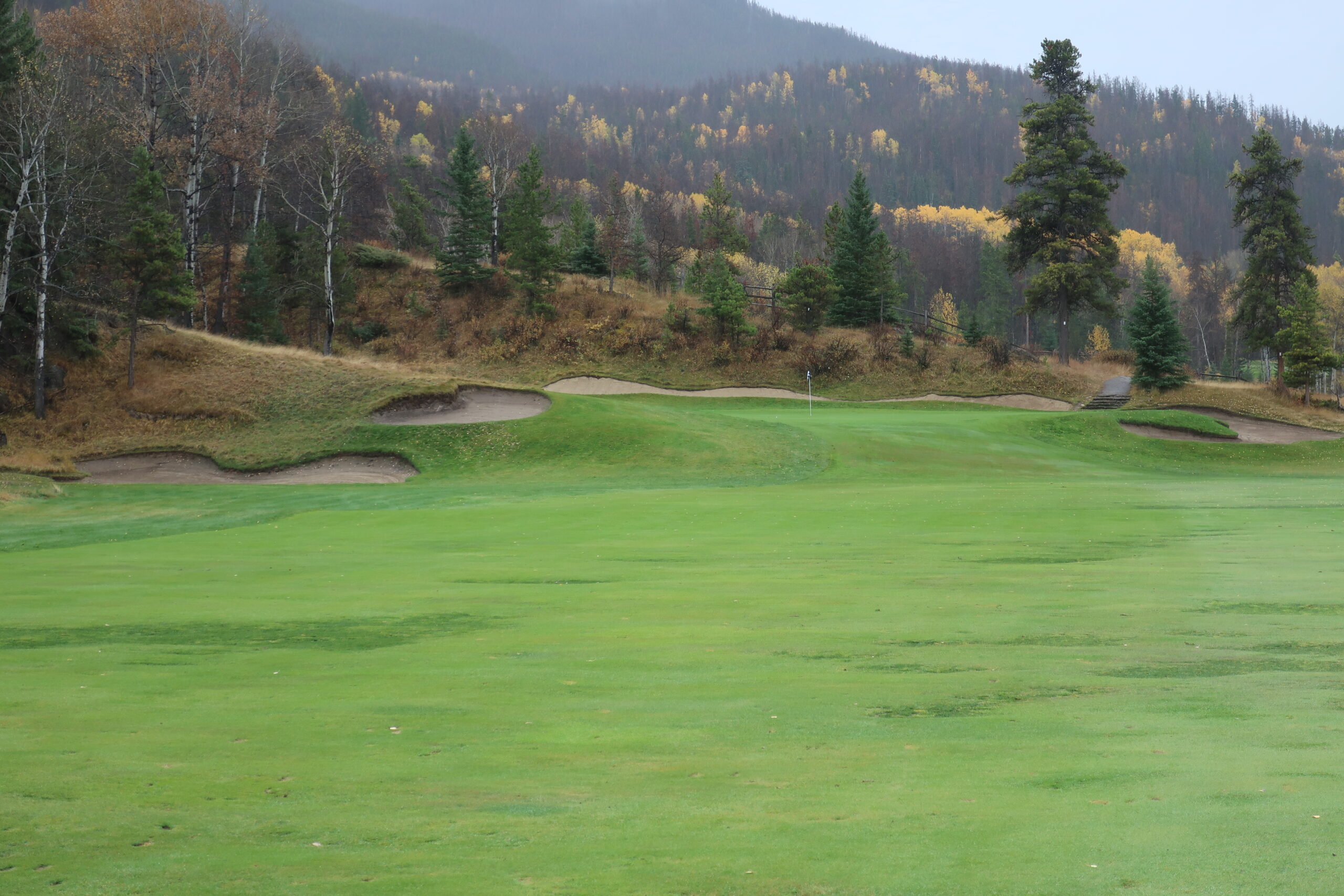
The other massive change would be expanding the green on the 18th all the way out to the bunker short of the green, which represents the 1925 version & photo from the CN archives.
Mowing Lines
Something as minor as mowing lines can be done this golf season if the club really wanted, but nonetheless, is important in presenting a golf course in its best light. Jasper was never meant to be a difficult, championship test—for Thompson, that was St. George’s—but some mowing line improvement can further enhance the thought behind playing a golf course. Generally, most of the mowing lines simply follow the bunkers to bring them more into play (rough stops balls from running into bunkers). However, the expanded fairway over the bunker on 13 allows for more room to smash it over the bunker and hope it bounces down to the Dell-style green, the expanded fairway behind 14 into 15 tee brings in more penalty for a common miss on a short hole, the adjusted mowing lines on 2 and 10 bring back multiple routes to the hole, and the adjusted fairway on 7 and 9 bring in more difficult recovery shots for ill-placed tee shots.
Green Contours
Green expansion will no doubt bring some questions about contours and the actual surfaces, and rightfully so. There are some old images of some of the greens. Notably, the 9th, 17th, and 10th. However, it is difficult to illustrate greens on the plan, and given how they really haven’t altered much other than the general wear and tear of a nearly 100 year golf course. If a restoration were ever undertaken, a master greens builder would be needed for a gentle touch to help blend the expanded areas together and potentially remove the Bill Robinson greens, which do not stick out as much as you would expect, but are rather bland.
Who Could Do It?


My go-to these days is Whitman, Axland, and Cutten, the super firm with a very impressive résumé of new builds. Dave Axland has history restoring Prairie Dunes, another Golden Age great course in Kansas from Perry & Press Maxwell, but other than that, their firm excels in new builds with a limited portfolio of restorative work. Keith Cutten, however, is an excellent historian, so I have no doubt they would do a good job. Whitman particularly likes Jasper, and can often be seen at Thompson’s mountain masterpiece playing when he is not shaping golf holes. Of the big three—Doak, Coore, Hanse—Bill Coore & Ben Crenshaw seem most suited for the project given their very subtle approach. However, Tom Doak has restored St. George’s, another Thompson, alongside Ian Andrew, and is for a couple greens that blend in with the rest of the surfaces. Hanse’s restorative work is big, bold, and creative, but for whatever reason, I’m not sure his vibe matches JPL. It seems he does his best work with massive overhauls, which Jasper does not need. For the newer generation, Riley Johns is local-ish, situated south in Canmore near Banff. Likewise for Trev Dormer, who lives on the BC side of the Rocky Mountains and shapes for Coore & Crenshaw. It will be interesting to see Jeff Mingay’s work at Beaconsfield, which is another elaborate Stanley Thompson. If that goes well, Mingay could easily be the front-runner for a Jasper restorative project given their similarities in bunker styles.
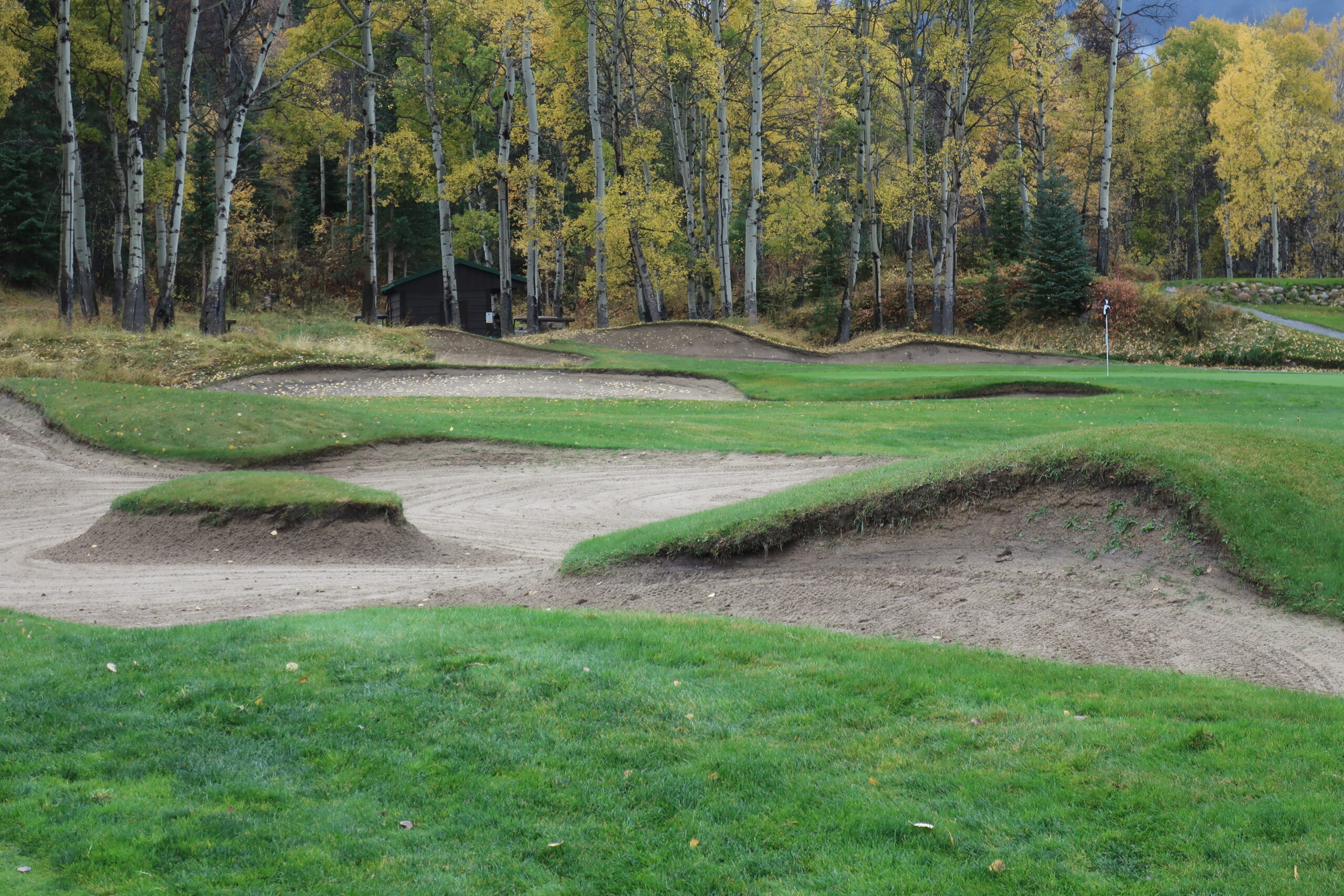
A Wish List
Surprisingly, there really are not really any instances of tree issues at Jasper. Rarely do they come in play, and if they do, it is the golfers fault. However, removing the trees on the inside corner/top of the hill on 3 would be welcomed, as well as some minor trimming on 7, 13 green, 14 inside the corner lakeside, 15 to open up views of Lac Beauvert, and left of 16 against the lake. Doing any such tree work in a National Park is a borderline impossible task, but one can dream, right? What Jasper could benefit from is additional tees to further restore how the holes played originally, which would include tree removal efforts. At just shy of 6,700 yards and 3,500 feet above sea level, the golf course is roughly the equivalent of ~6350 yards at sea level. While Jasper was never meant to be difficult, some additional length on the 2nd, 3rd, 4th, 6th, 8th, 13th, 17th, and 18th could help further illustrate why Mackenzie, Thomas and so many others celebrated this golf course. It does not have to be 7,000 yards, but some additional length to help bring longer clubs into greens as originally intended would be lovely.
A special shoutout to Ian Andrew’s In Every Genius There’s a Little Madness, which provides important references such as Thompson’s blueprint, original photos, and the 1926 renovation plan.


